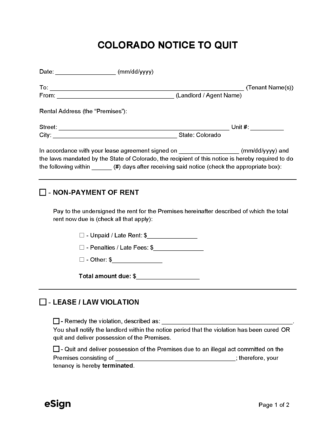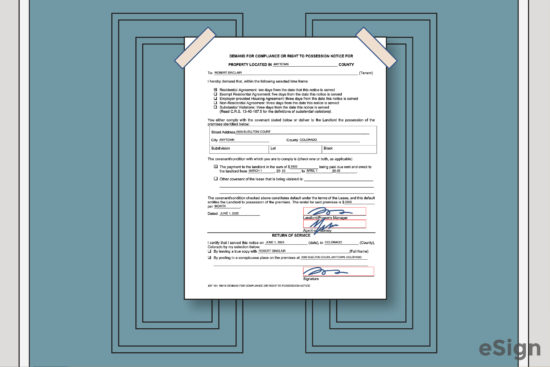Eviction Notices: By Type (3)
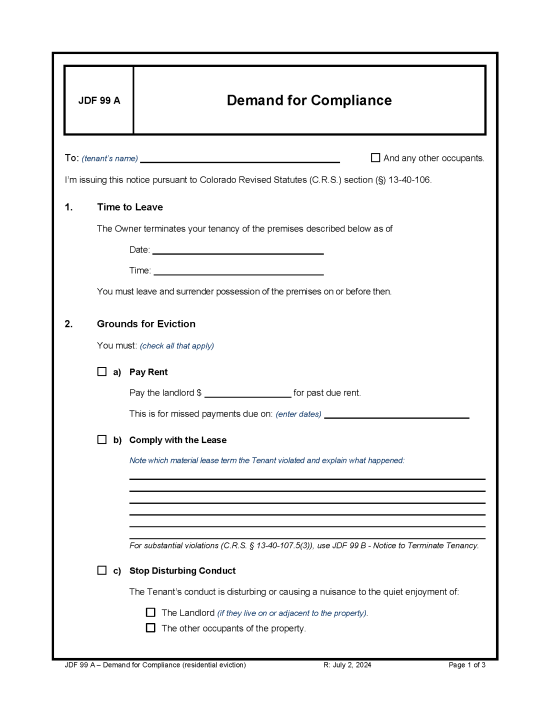
Demand for Compliance (Form JDF 99 A) – This notice informs tenants that they are in violation of their lease agreement and must remedy the violation or vacate the premises. Download: PDF
|
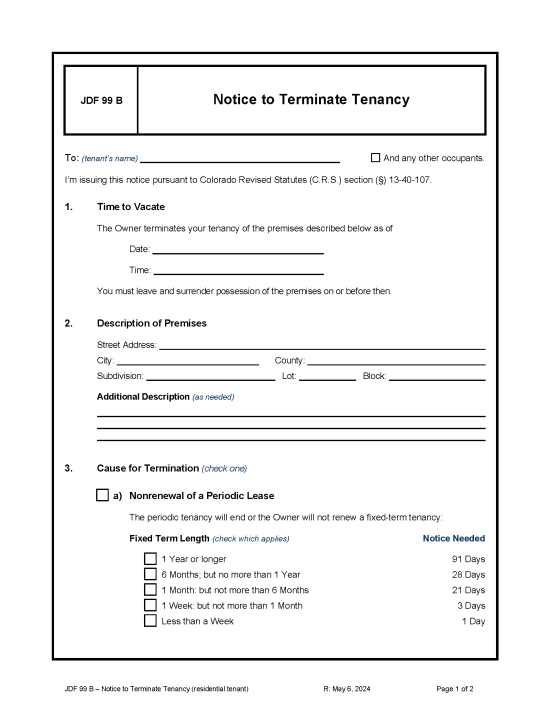 Notice to Terminate Tenancy (Form JDF 99 B) – A document that allows a landlord to terminate a tenancy because the landlord does not wish to renew the lease, the tenant committed a serious violation, or the tenant committed a repeat violation after receiving a Demand for Compliance. Notice to Terminate Tenancy (Form JDF 99 B) – A document that allows a landlord to terminate a tenancy because the landlord does not wish to renew the lease, the tenant committed a serious violation, or the tenant committed a repeat violation after receiving a Demand for Compliance.
Download: PDF |
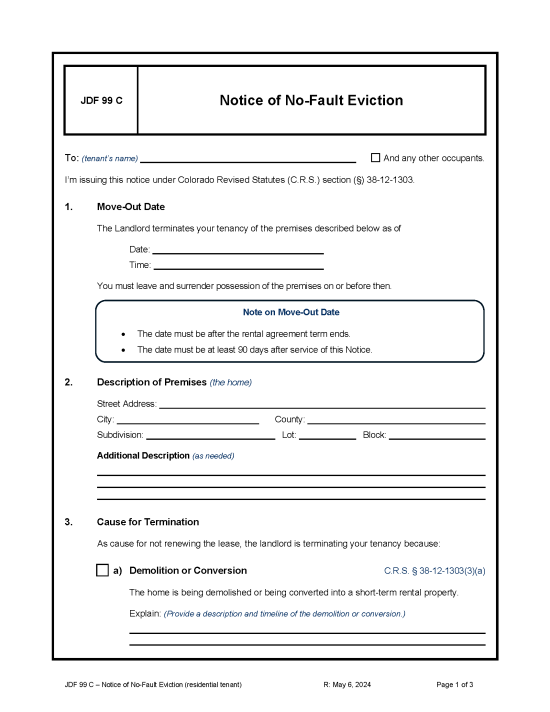 Notice of No-Fault Eviction (Form JDF 99 C) – Used when the landlord wants to terminate a tenancy for a reason beyond the tenant’s fault. Notice of No-Fault Eviction (Form JDF 99 C) – Used when the landlord wants to terminate a tenancy for a reason beyond the tenant’s fault.
Download: PDF |
Notice Requirements
- Grace Period for Rent – Not mentioned in state statutes.
- Non-Payment of Rent – 10 days.[1]
- Lease Non-Compliance – 10 days.[2]
- Periodic Tenancy Termination[3]:
- Tenancy one year or longer – 91 days.
- Tenancy six months to one year – 28 Days
- Tenancy one to six months – 21 Days
- Tenancy one week to one month – 3 Days
- Tenancy less than one Week – 1 Day
- Substantial Violation – 3 days.[4]
- No-Fault Eviction – 90 days.[5]
How to Evict a Tenant in Alaska
Step 1 – Notify the Tenant
Before a tenant can be evicted from their rented property, their landlord must notify them of their breach allow them to remedy the issue, if applicable. The landlord must have a process server deliver the appropriate form to the tenant:
Step 2 – Commence Action
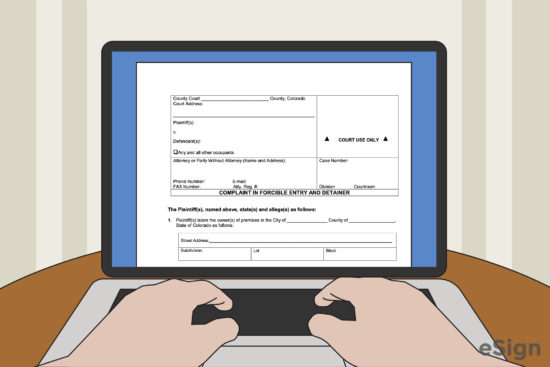
If the tenant fails to comply with the notice, a forcible entry and detainer action (eviction) may be filed by the landlord. The landlord will need to download and complete the following forms:
- Eviction Complaint (JDF-101)
- Eviction Summons (JDF-102)
- Eviction Answer (JDF-103) (complete only case caption)
Step 3 – File Documents
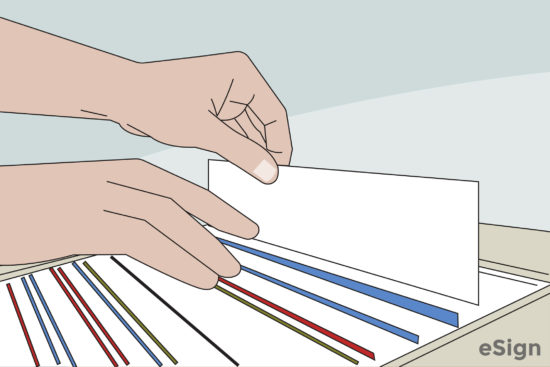
Step 4 – Serve the Tenant

At least seven (7) days before the court date on the Summons, the landlord must hire a process server (or sheriff’s department or an eligible third party) to serve all documents to the tenant(s). The landlord is responsible for paying any fees associated with serving these papers. Furthermore, they must provide the process server with an Affidavit of Service (Form PDF-98) (number of affidavits must match the number of tenants). The server will return the original Summons and completed Affidavit of Service to be filed with the court clerk.
If personal service is not successful, the server must post the documents on the door of the tenant’s property. In addition, the landlord must mail copies of all these documents (postage prepaid, first-class mail) and complete the certificate of mailing section on the Summons form.
Step 5 – First Appearance
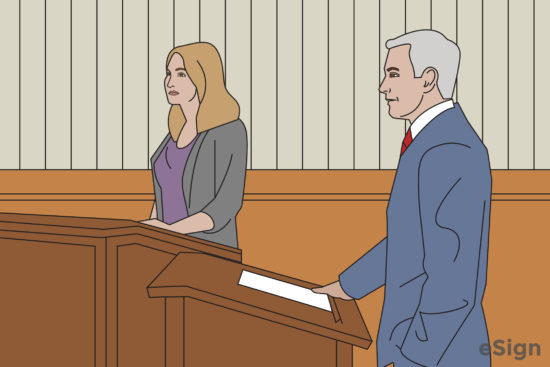
Both parties should appear before the court on the date marked on the Summons form. As long as the landlord and tenant(s) show up, a decision will be made based on one of the following occurrences:
- The parties can agree to a stipulation which means certain requirements must be met by the tenant (i.e., vacating the property, paying money owed + other costs, or remaining on the property but agreeing to specific conditions). A Stipulated Agreement (Form JDF-106 A) must be completed and approved by the court, and an Order re: Stipulated Agreement (Form JDF-106 B) must be filed at the same time.
- The landlord may decide that they want to discuss the matter further with the tenant at this first appearance or give them another opportunity to agree to a stipulation.
- The tenant files an Eviction Answer (JDF-103) to assert a defense against the suit, file a counterclaim, and request a trial, either by judge or jury. (This must happen on or before the first appearance date.)
If the tenant does not appear or if they do not file an Answer, the court may award possession and monetary judgment to the landlord. (Motion for Entry of Judgment (Form JDF-107 A) and Judgment Order (Form JDF-107 B) must be filed.)
Step 6 – Judgment

Step 7 – Writ of Restitution
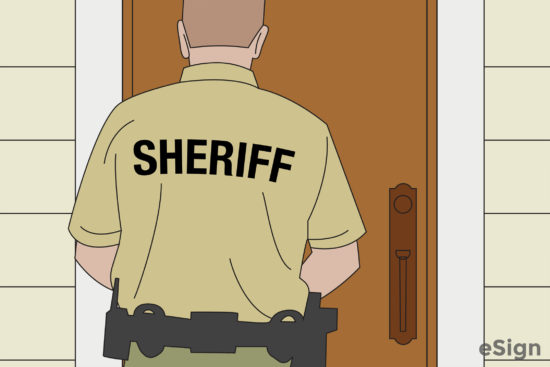
Step 8 –
Court Forms + Resources
Forms
- Eviction Complaint (JDF-101)
- Signed by: Plaintiff Signature (or Attorney)
- Eviction Summons (JDF-102)
- Signed by: Deputy Clerk and Plaintiff’s Attorney Signature
- Eviction Answer (JDF-103)
- Signed by: Defendant Signature (and Attorney, if applicable)
- Request for Documents (JDF-108)
- Signed by: Defendant Signature
- Motion to Waive Fees (JDF-205)
- Signed by: Defendant Signature (and Attorney, if applicable)
- Order re: Court Fees (JDF-206)
- Signed by: Judge (or Magistrate)
- Affidavit of Service (Form PDF-98)
- Signed by: Process Server Signature
- Stipulated Agreement (Form JDF-106 A)
- Signed by: Plaintiff and Defendant Signature
- Order re: Stipulated Agreement (Form JDF-106 B)
- Signed by: Judge (or Magistrate) and Clerk Signature
- Motion for Entry of Judgment (Form JDF-107 A)
- Signed by: Plaintiff and Defendant Signature
- Judgment Order (Form JDF-107 B)
- Signed by: Judge (or Magistrate) and Clerk Signature
- Writ of Restitution (Form JDF-109)
- Signed by: Judge (or Magistrate) Signature
Resources
